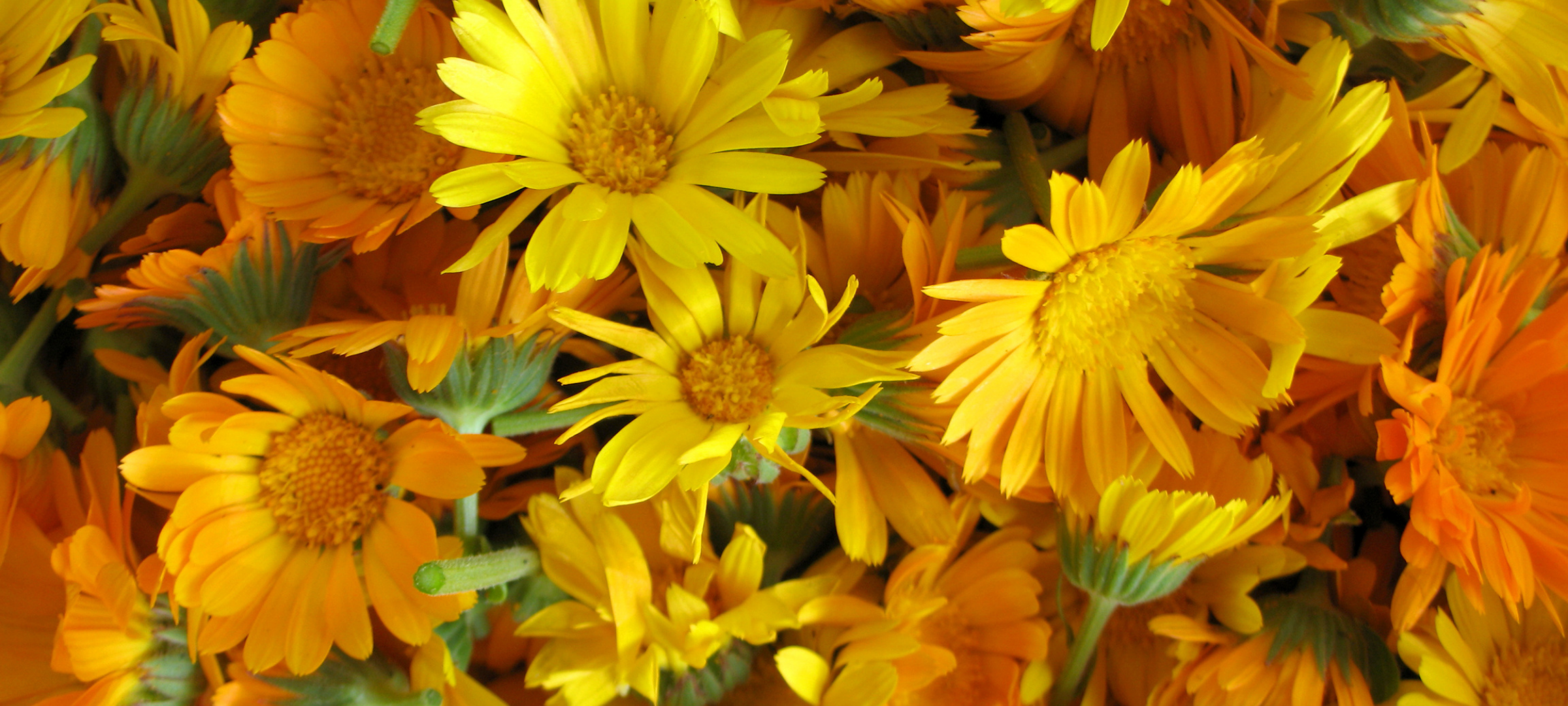
Latin: Calendula officinalis
Part Used: flower
Constituents: carotenoids, flavonoids, mucilage, saponins, bitters, volatile oil, resins
Medicinal Actions: anti-inflammatory, astringent, vulnerary, antifungal, cholagogue, emmenagogue
Calendula is sometimes called pot marigold or common marigold, though it’s not a marigold at all. (Marigolds belong to the genus Tagetes.) It earns its Latin name because it is said to be in bloom on the calends, or first day, of every month.
There is some truth to this, as Calendula has an especially long flowering season that begins early in the spring and continues late into the fall, sometimes continuing after the first snow has fallen. Because of its long growing season, it has a history of being used in winter soups and stews. It has been said to promote good health and brighten moods in the colder months.
Calendula is a powerful vulnerary that helps to heal wounds by promoting cell repair and growth. It’s excellent as a first aid treatment of minor burns and scalds. Use it in a lotion, as a poultice, or a compress. It’s a common ingredient in creams, salves, and ointments, for treating skin irritations and in skin care products.
Calendula is valued for being potent, but gentle. It’s mild enough to use on babies and makes for an effective diaper rash remedy. Taken internally, it can also help moderate fever. Its antifungal properties make it effective in fighting infections, and its anti-inflammatory effects make it useful in treating indigestion and ulcers. Calendula can also help to cleanse the lymphatic system by stimulating lymphatic drainage and encouraging healthy flow.
Combine with burdock, red clover, cleavers, and chickweed for lymphatic health, and
with marshmallow root and geranium for digestive support.
The edible flowers can also be added to stews, salads, soups, and omelets.
Calendula does well in full sun and fertile soil with occasional watering, though it’s not fussy and will adapt to less ideal conditions. Harvest when the blooms are sticky with resin—this is where its anti-fungal properties lie.


CALENDULA OIL
Fill a quart glass jar three-quarters full with calendula buds and cover with olive oil (for medicinal purposes) or grapeseed, almond, or apricot kernel oil (for cosmetic purposes). Infuse in a warm, sunny spot for 3 to 4 weeks.
Strain and rebottle, and store in a cool place away from sunlight. It will keep for up to a year. Use the oil topically to treat skin rashes, eczema, and other skin irritations.

Identifying
Features & Cultivation
Calendula is a hardy plant with a long blooming season. You can sew seeds directly in the spring, or plant in the fall for late early spring blooms. The more you pick these cheery flowers, the more the plant will bloom.











